Abstract
We investigated the mechanism of gastroesophageal reflux (GER) in 10 health volunteer subjects. Continuous recordings of intraluminal esophageal pH and pressure were obtained on two consecutive nights from 6:00 p.m. to 6:30 a.m. in each subject. During each study, the subject remained recumbent, except to eat a standardized meal after 1 h of basal recording. A manometric assembly with seven recording lumens monitored: (a) lower esophageal sphincter (LES) pressure via a sleeve device 6.5 cm in length, (b) esophageal-body motor activity, (c) swallowing activity in the pharynx, and (d) gastric pressure. An electrode 5 cm above the LES recorded esophageal pH. Sleep was monitored by electroencephalogram. All subjects showed wide variations of basal LES pressure. GER was not related to low steady-state basal LES pressure, but rather occurred during transient 5-30 s episodes of inappropriate complete LES relaxation. The inappropriate LES relaxations were usually either spontaneous or immediately followed appropriate sphincter relaxation induced by swallowing. The majority of GER episodes occurred within the first 3 h after eating. During the night LES relaxation and GER occurred only during transient arousals from sleep or when the subjects were fully awake, but not during stable sleep. After GER the esophagus was generally cleared of refluxed acid by primary peristalsis and less frequently by secondary peristalsis. Nonperistaltic contractions were less effective than peristalsis for clearing acid from the esophagus. We conclude that in asymptomatic recumbent subjects GER is related to transient inappropriate LES relaxations rather than to low steady-state basal LES pressure and also, that primary perstalsis is the major mechanism that clears the esophagus of refluxed material.
Full text
PDF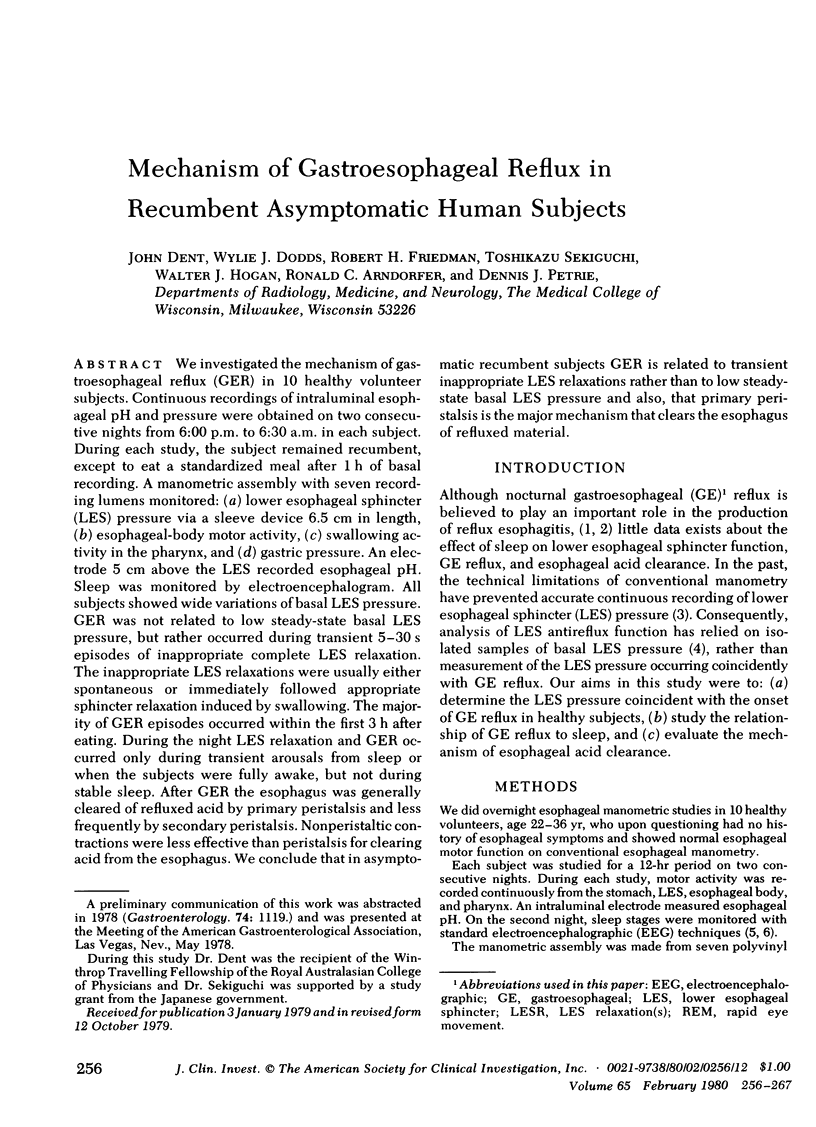
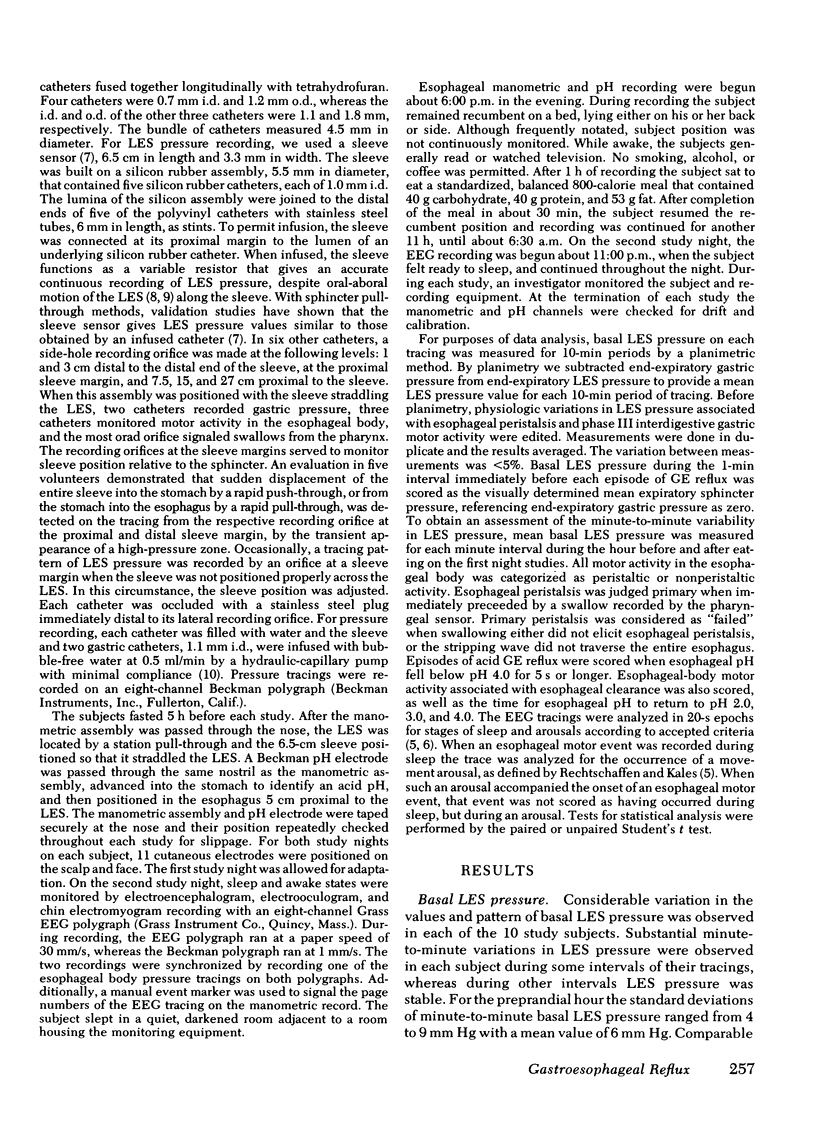
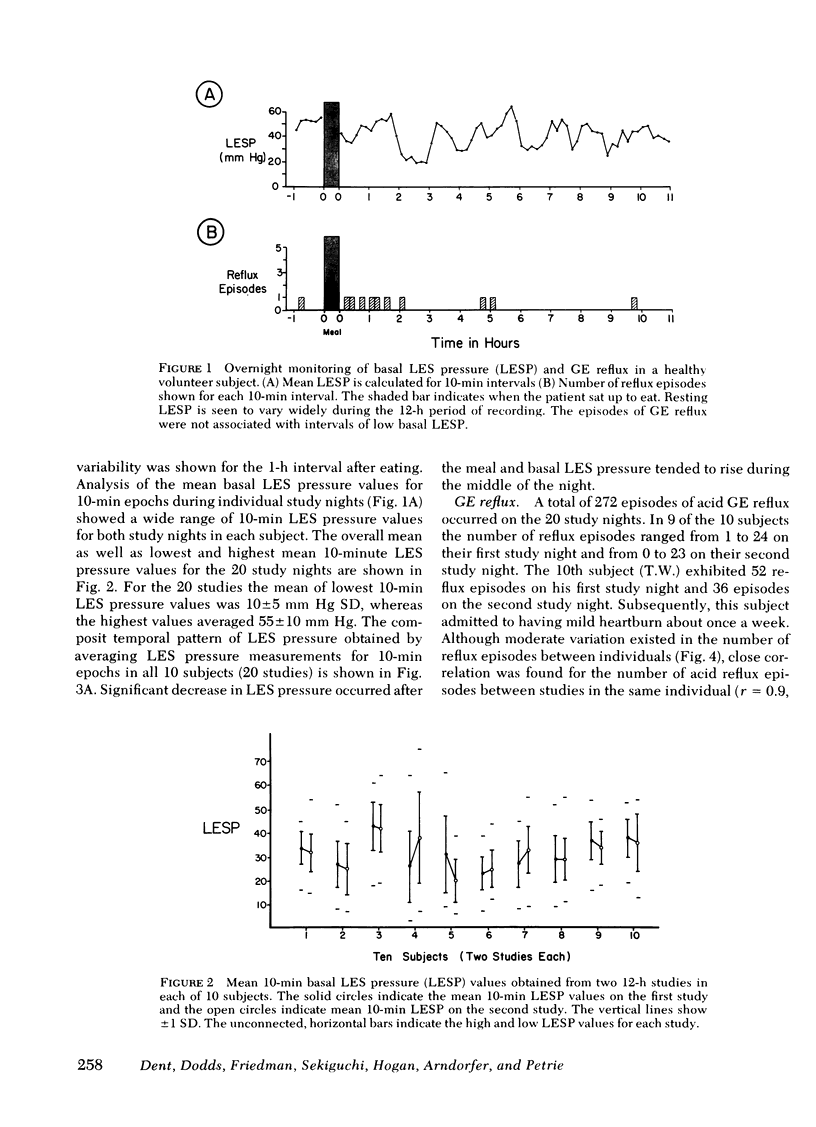
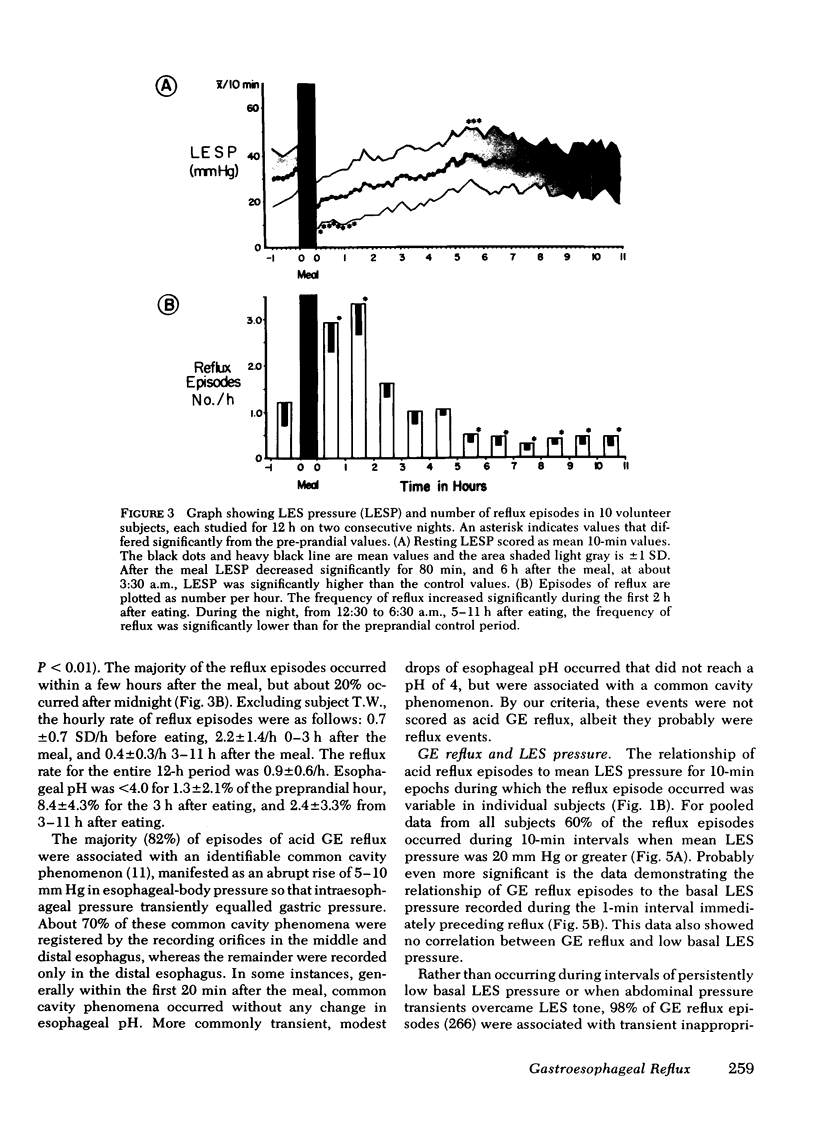

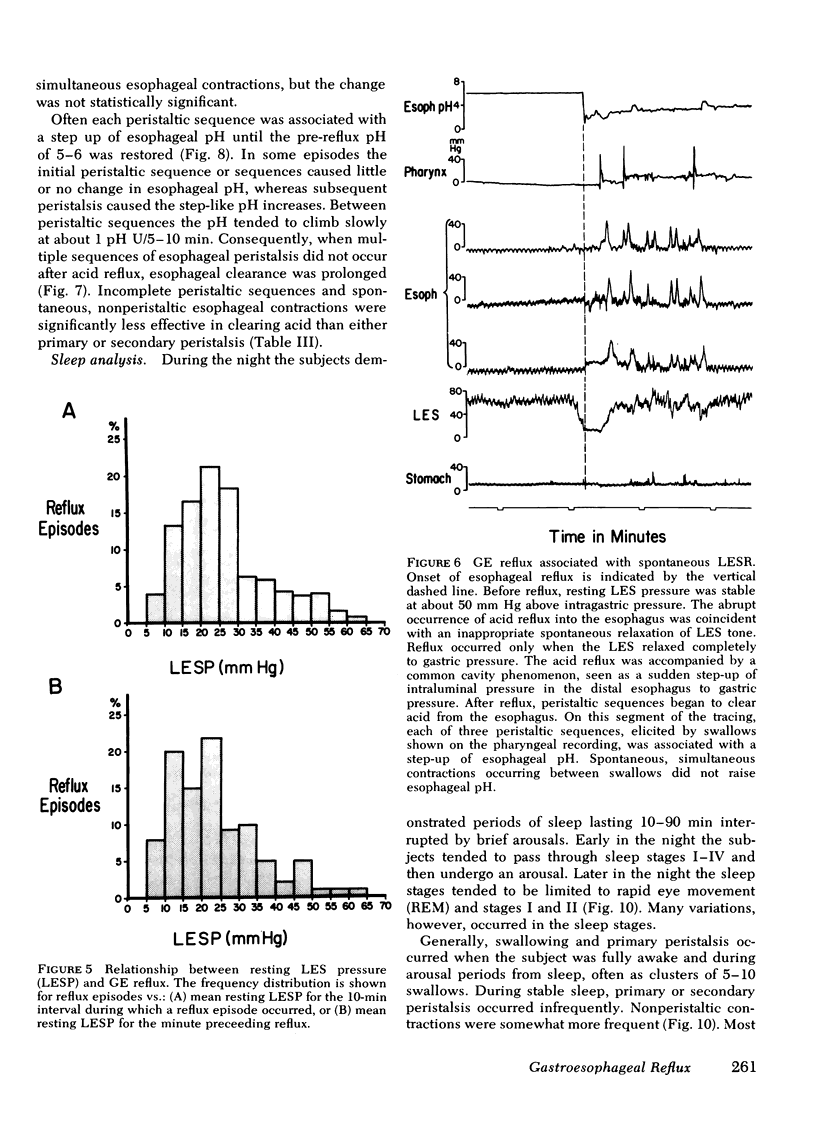
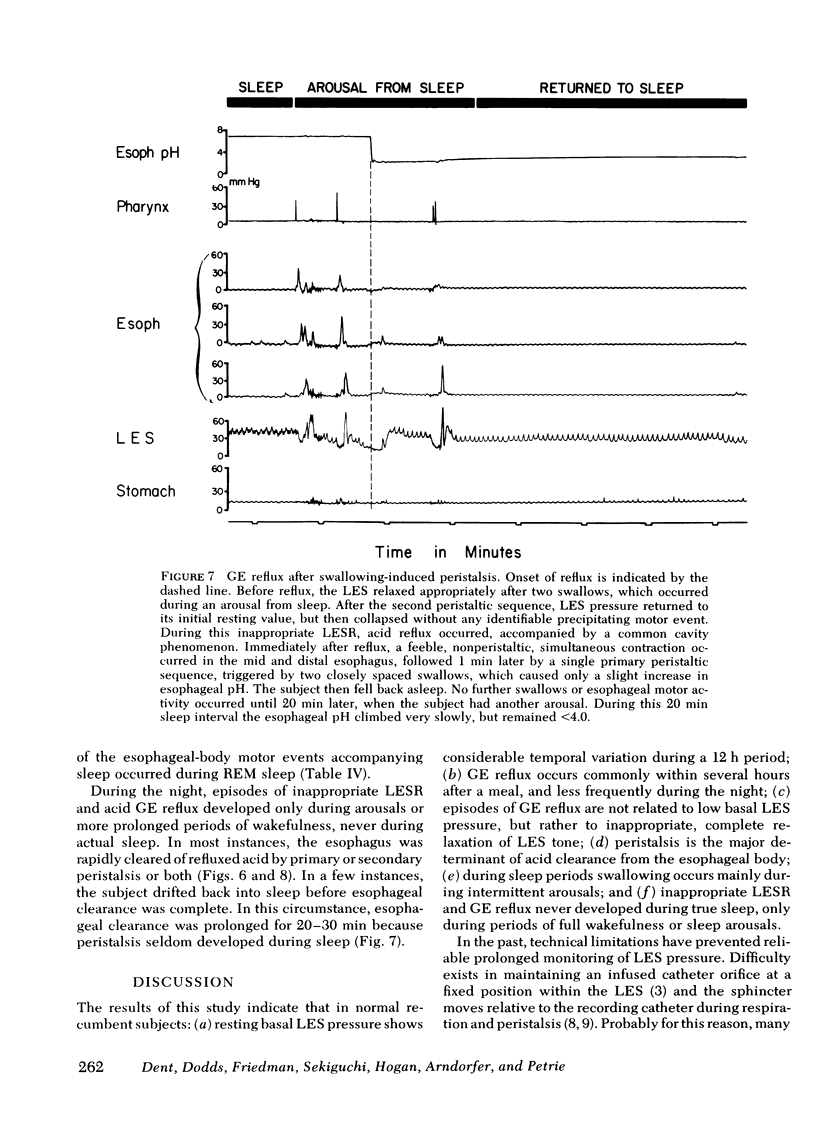
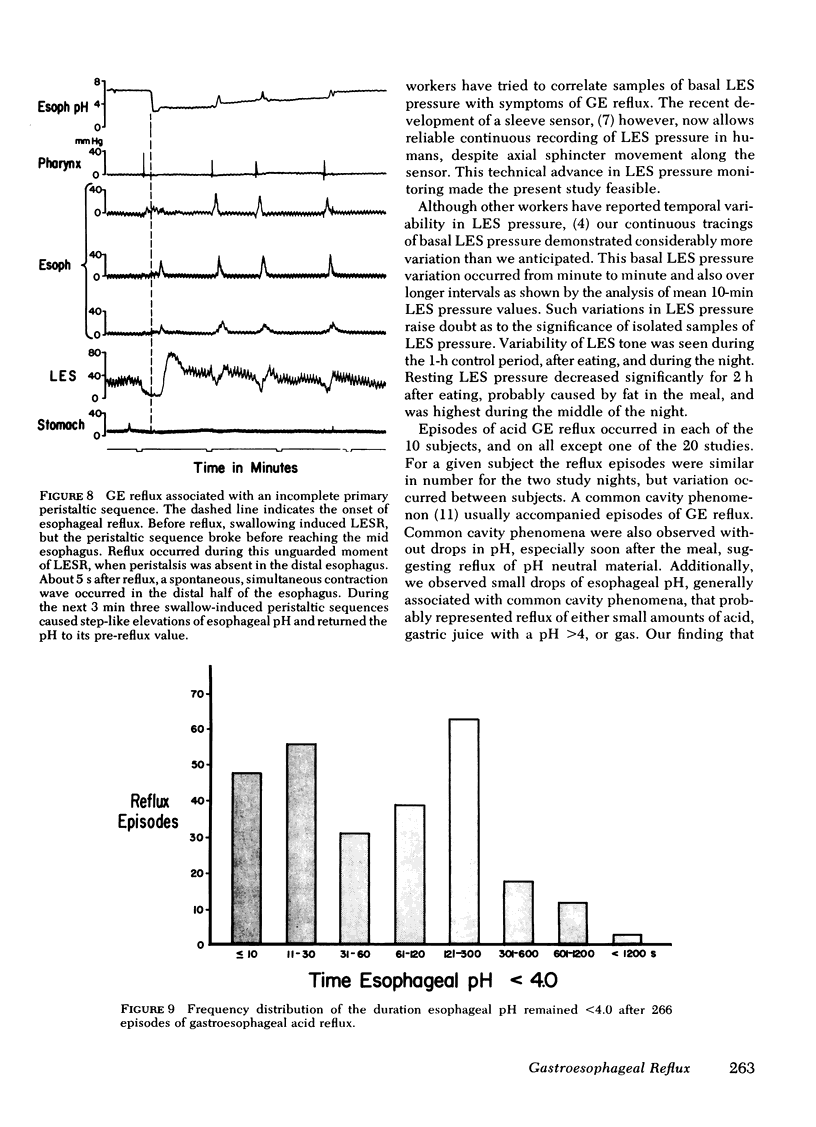
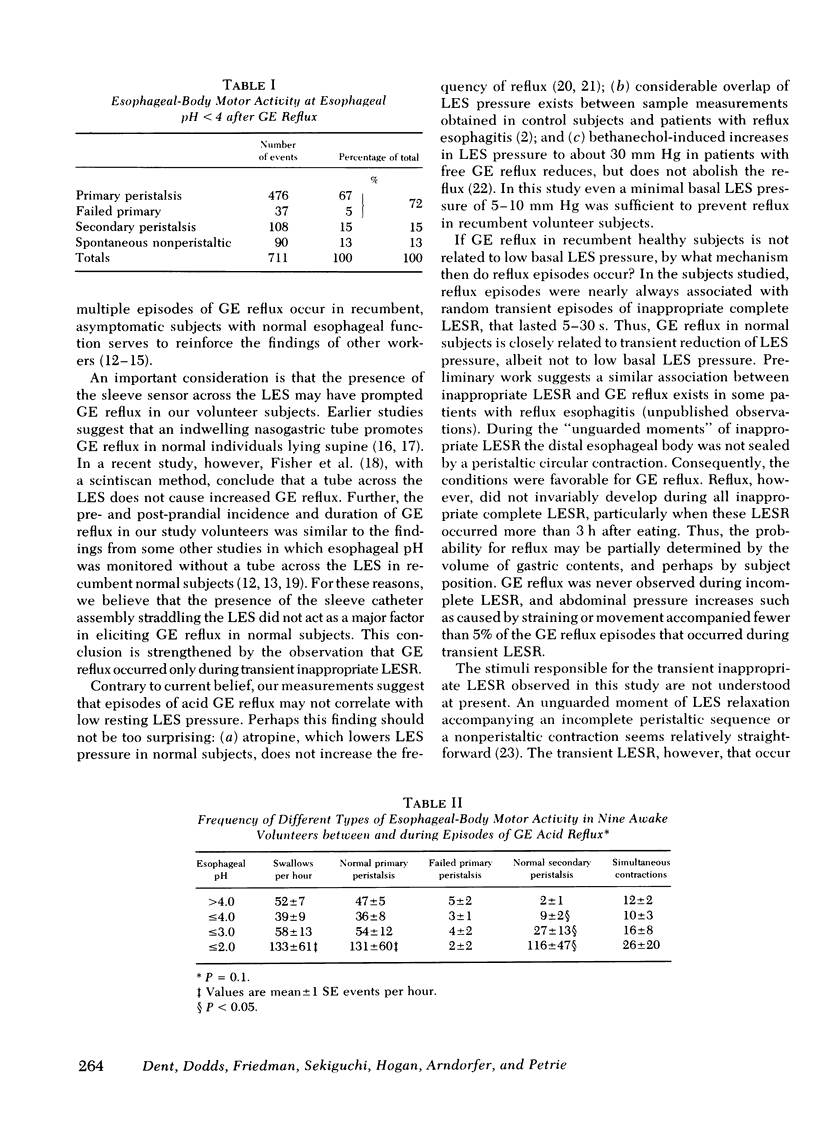
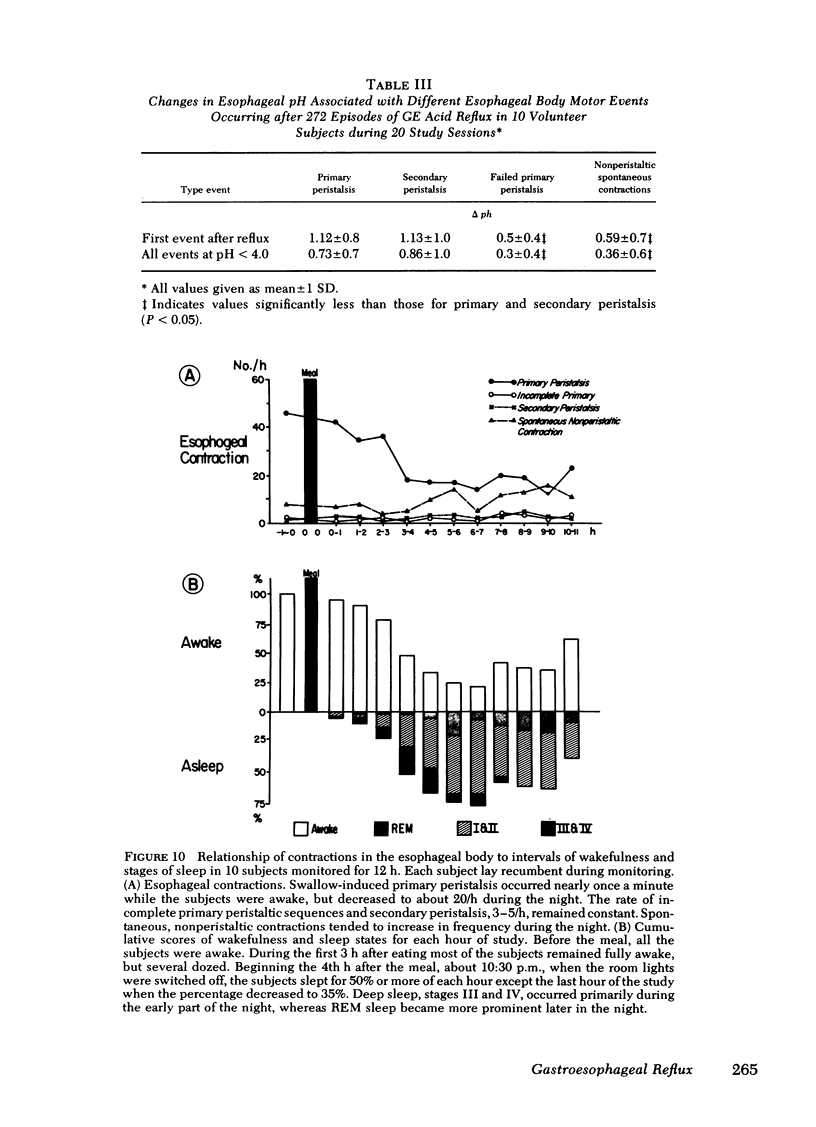

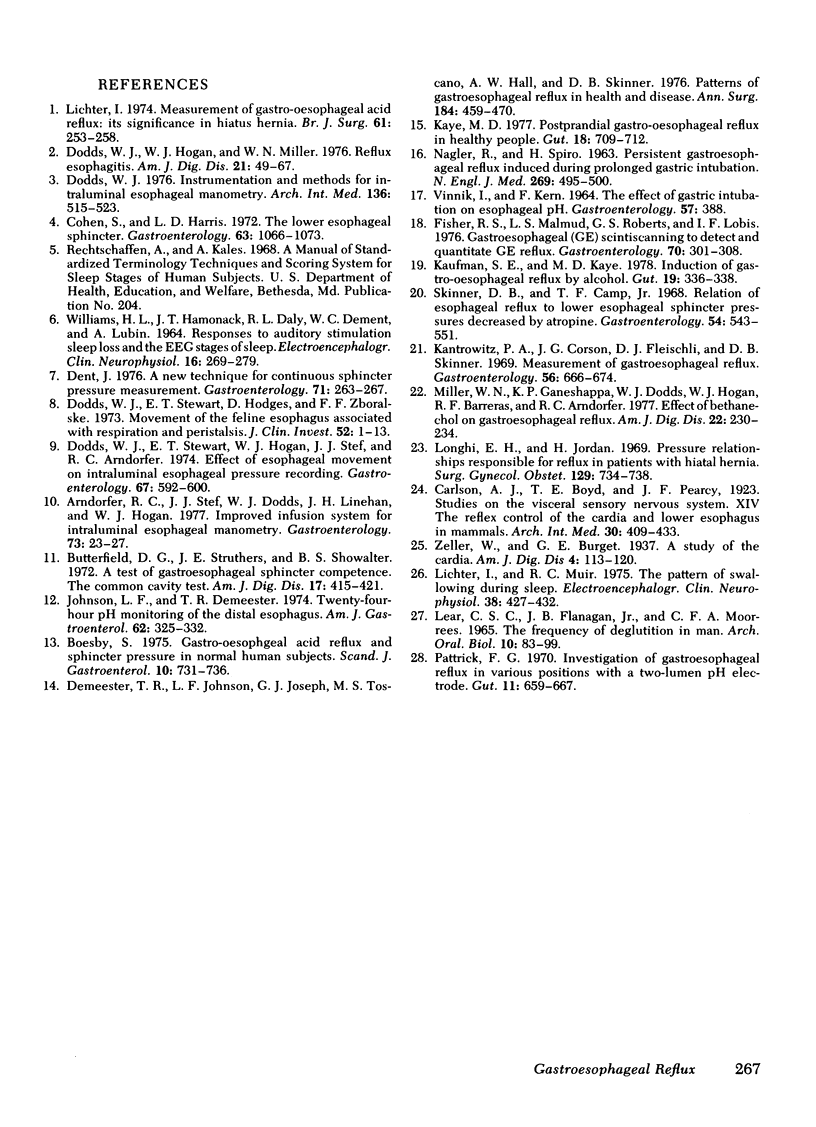
Images in this article
Selected References
These references are in PubMed. This may not be the complete list of references from this article.
- Arndorfer R. C., Stef J. J., Dodds W. J., Linehan J. H., Hogan W. J. Improved infusion system for intraluminal esophageal manometry. Gastroenterology. 1977 Jul;73(1):23–27. [PubMed] [Google Scholar]
- Boesby S. Gastro-oesophageal acid reflux and sphincter pressure in normal human subjects. Scand J Gastroenterol. 1975;10(7):731–736. [PubMed] [Google Scholar]
- Butterfield D. G., Struthers J. E., Jr, Showalter J. P. A test of gastroesophageal sphincter competence. The common cavity test. Am J Dig Dis. 1972 May;17(5):415–421. doi: 10.1007/BF02231293. [DOI] [PubMed] [Google Scholar]
- Cohen S., Harris L. D. The lower esophageal sphincter. Gastroenterology. 1972 Dec;63(6):1066–1073. [PubMed] [Google Scholar]
- Demeester T. R., Johnson L. F., Joseph G. J., Toscano M. S., Hall A. W., Skinner D. B. Patterns of gastroesophageal reflux in health and disease. Ann Surg. 1976 Oct;184(4):459–470. doi: 10.1097/00000658-197610000-00009. [DOI] [PMC free article] [PubMed] [Google Scholar]
- Dent J. A new technique for continuous sphincter pressure measurement. Gastroenterology. 1976 Aug;71(2):263–267. [PubMed] [Google Scholar]
- Dodds W. J., Hogan W. J., Miller W. N. Reflux esophagitis. Am J Dig Dis. 1976 Jan;21(1):49–67. doi: 10.1007/BF01074140. [DOI] [PubMed] [Google Scholar]
- Dodds W. J. Instrumentation and methods for intraluminal esophageal manometry. Arch Intern Med. 1976 May;136(5):515–523. [PubMed] [Google Scholar]
- Dodds W. J., Stewart E. T., Hodges D., Zboralske F. F. Movement of the feline esophagus associated with respiration and peristalsis. An evaluation using tantalum markers. J Clin Invest. 1973 Jan;52(1):1–13. doi: 10.1172/JCI107152. [DOI] [PMC free article] [PubMed] [Google Scholar]
- Dodds W. J., Stewart E. T., Hogan W. J., Stef J. J., Arndorfer R. C. Effect of esophageal movement on intraluminal esophageal pressure recording. Gastroenterology. 1974 Oct;67(4):592–600. [PubMed] [Google Scholar]
- Fisher R. S., Malmud L. S., Roberts G. S., Lobis I. F. Gastroesophageal (GE) scintiscanning to detect and quantitate GE reflux. Gastroenterology. 1976 Mar;70(3):301–308. [PubMed] [Google Scholar]
- Johnson L. F., Demeester T. R. Twenty-four-hour pH monitoring of the distal esophagus. A quantitative measure of gastroesophageal reflux. Am J Gastroenterol. 1974 Oct;62(4):325–332. [PubMed] [Google Scholar]
- Kaufman S. E., Kaye M. D. Induction of gastro-oesophageal reflux by alcohol. Gut. 1978 Apr;19(4):336–338. doi: 10.1136/gut.19.4.336. [DOI] [PMC free article] [PubMed] [Google Scholar]
- Kaye M. D. Postprandial gastro-oesophageal reflux in healthy people. Gut. 1977 Sep;18(9):709–712. doi: 10.1136/gut.18.9.709. [DOI] [PMC free article] [PubMed] [Google Scholar]
- LEAR C. S., FLANAGAN J. B., Jr, MOORREES C. F. THE FREQUENCY OF DEGLUTITION IN MAN. Arch Oral Biol. 1965 Jan-Feb;10:83–100. doi: 10.1016/0003-9969(65)90060-9. [DOI] [PubMed] [Google Scholar]
- Lichter I. Measurement of gastro-oesophageal acid reflux: its significance in hiatus hernia. Br J Surg. 1974 Apr;61(4):253–258. doi: 10.1002/bjs.1800610402. [DOI] [PubMed] [Google Scholar]
- Lichter I., Muir R. C. The pattern of swallowing during sleep. Electroencephalogr Clin Neurophysiol. 1975 Apr;38(4):427–432. doi: 10.1016/0013-4694(75)90267-9. [DOI] [PubMed] [Google Scholar]
- Longhi E. H., Jordan P. H., Jr Pressure relationships responsible for reflux in patients with hiatal hernia. Surg Gynecol Obstet. 1969 Oct;129(4):734–748. [PubMed] [Google Scholar]
- Miller W. N., Ganeshappa K. P., Dodds W. J., Hogan W. J., Barreras R. F., Arndorfer R. C. Effect of bethanechol on gastroesophageal reflux. Am J Dig Dis. 1977 Mar;22(3):230–234. doi: 10.1007/BF01072281. [DOI] [PubMed] [Google Scholar]
- NAGLER R., SPIRO H. M. PERSISTENT GASTROESOPHAGEAL REFLUX INDUCED DURING PROLONGED GASTRIC INTUBATION. N Engl J Med. 1963 Sep 5;269:495–500. doi: 10.1056/NEJM196309052691003. [DOI] [PubMed] [Google Scholar]
- Pattrick F. G. Investigation of gastroesophageal reflux in various positions with a two-lumen pH electrode. Gut. 1970 Aug;11(8):659–667. doi: 10.1136/gut.11.8.659. [DOI] [PMC free article] [PubMed] [Google Scholar]
- Skinner D. B., Camp T. F., Jr Relation of esophageal reflux to lower esophageal sphincter pressures decreased by atropine. Gastroenterology. 1968 Apr;54(4):543–551. [PubMed] [Google Scholar]
- VINNIK I. E., KERN F., Jr THE EFFECT OF GASTRIC INTUBATION ON ESOPHAGEAL PH. Gastroenterology. 1964 Oct;47:388–394. [PubMed] [Google Scholar]
- WILLIAMS H. L., HAMMACK J. T., DALY R. L., DEMENT W. C., LUBIN A. RESPONSES TO AUDITORY STIMULATION, SLEEP LOSS AND THE EEG STAGES OF SLEEP. Electroencephalogr Clin Neurophysiol. 1964 Mar;16:269–279. doi: 10.1016/0013-4694(64)90109-9. [DOI] [PubMed] [Google Scholar]



